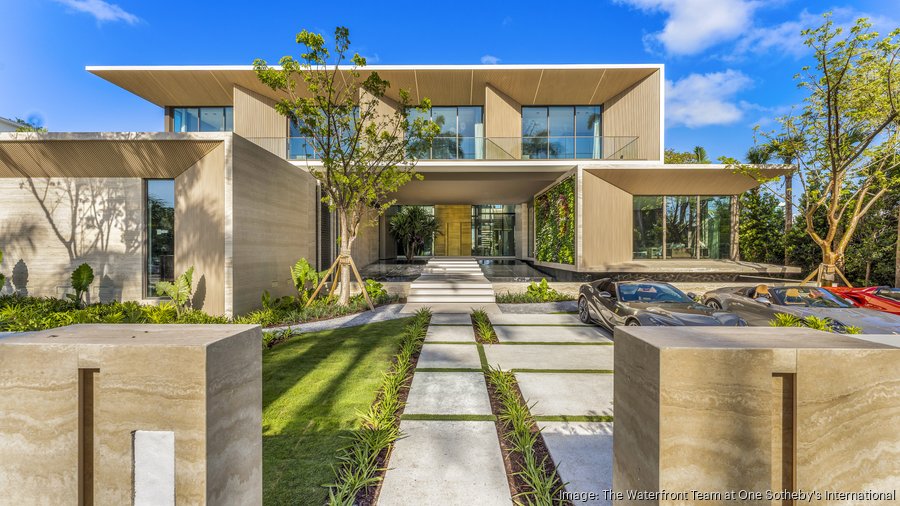
Austin Business Journal reports, "The U.S. luxury housing segment has bucked some of the trends affecting the rest of the residential real estate market, in large part because those buyers and sellers are less affected by affordability issues.
But like the broader housing market, luxury homes continue to see a surge in prices. In fact, luxury home prices hit a new high in the second quarter of this year, with a typical home in the category selling for $1.18 million, an 8.8% increase from the same quarter last year, according to Redfin Corp. data.
Redfin defines luxury homes as those estimated to be in the top 5% of their respective metro areas, based on market value, while non-luxury homes are estimated to be in the 35th to 65th percentile based on market value.
One of the biggest influencers in the for-sale housing market today is mortgage-rate growth and volatility. The luxury segment, however, isn't as affected as other portions of the market, even though about half of luxury homebuyers still use financing for their purchases, said Chen Zhao, economics lead at Redfin (Nasdaq: RDFN).
This spring, 43.7% of luxury homes sold were purchased with all-cash offers.
"It’s not inconsequential what mortgage rates are," she said. "I think these buyers are more financing optional. … It may or may not make sense to finance their purchase."
Luxury homebuyers also tend to be investors and, depending on the economy, could choose to invest in multiple investment classes like stock or bond portfolios or real estate. Therefore, a purchase of a luxury home may not be just for consumption value, but also for investment reasons, Zhao said.
Luxury housing slumped somewhat in late 2022 and early 2023 as the rest of the housing market slowed but it's since recovered faster than the non-luxury segment.
Zhao said the continued strong gains in home values may have some luxury homeowners realizing they could get a pretty good price on their homes if they list.
"You’re seeing tremendous returns and growth in wealth for the upper-income distribution," Zhao said. "People have money they can invest, prices are going up. Investing in luxury real estate might not be such a bad idea."
Despite luxury housing being somewhat insulated by the financing and affordability challenges facing the rest of the housing market, there has been an uptick in inventory, and upper-tier homes are sitting on the market a little longer these days.
Luxury inventory increased 9.7% year over year in the second quarter, the fourth consecutive quarter of supply growth. By comparison, non-luxury inventory grew 3.9%, according to Redfin.
Additionally, luxury homes listed for sale are on the market for a median 40 days, two days longer than the same time a year prior. Non-luxury homes are taking a median 31 days to sell.
That uptick in listings and homes sitting for longer is more an indication of the market normalizing than anything of note or concern, Zhao said. There's also still somewhat of an expectation mismatch between buyers and sellers, with sellers hoping to get top dollar for their homes while buyers are expecting to find better deals since the post-pandemic slowdown.
$1M properties considered starter homes in many markets
A $1 million home may once have been considered an informal marker of a luxury residence, but that's no longer the case in many U.S. metro areas. In fact, buyers need to shell out seven figures to buy what's considered a starter home in some markets.
In 237 U.S. cities, the typical starter home — considered to be inventory in the lowest third of home values in a given region — now costs $1 million or more, a recent analysis by Zillow Group Inc. (Nasdaq: ZG) found. Five years ago, only 84 cities fit that criteria.
Most of the cities with $1 million-plus starter home are in California, with 117 such cities. New York and New Jersey had 31 and 21 markets, respectively, followed by Florida and Massachusetts, with 11 each. By metro area, New York City had the most cities with $1 million-dollar starter homes, with 48, followed by the San Francisco metro, at 44; Los Angeles, at 35; San Jose, California, at 15; and Miami and Seattle, each with eight.
Zhao said there's been recent housing market strength in places like the San Francisco Bay Area, especially San Jose. The median sale price for homes in that city's luxury housing market grew 16.4% between Q2 2023 and Q2 2024.
"Some of that is because that area corrected when rates first started going up in late 2021 and early 2022," she said, adding that the region has since begun to recover."
Source: Austin Business Journal
Written by: Ashley Fahey
Published: July 31, 2024
Posted by Grossman & Jones Group on
Leave A Comment